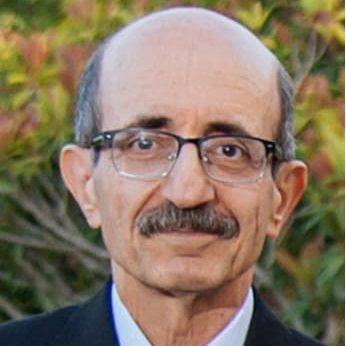Shape Memory Alloy (SMA): A Smart Material for Smart and Resilient Systems
A special issue of Sensors (ISSN 1424-8220). This special issue belongs to the section "Sensor Materials".
Deadline for manuscript submissions: closed (31 March 2023) | Viewed by 20846
Special Issue Editors
2. Smart Structures Group, The University of British Columbia, Vancouver, BC V6T 1Z4, Canada
Interests: modular construction; prefabrication; 3D printing; robotic construction; digital construction; net-zero; steel structures; RC structures; damping system; base isolation; vibration control; resilience; AI; VR; AR; smart structures; infrastructure; digital twin; SHM; structural dynamics; finite element method; earthquake engineering; smart materials
Special Issues, Collections and Topics in MDPI journals
2. School of Civil Engineering, University of Leeds, Leeds LS2 9JT, UK
Interests: AI-based methods for structural health monitoring and dynamic response; random vibrations; hysteretic systems; seismic isolation; reliability and resilience
Special Issues, Collections and Topics in MDPI journals
Interests: probabilistic mechanics; sustainable and resilient infrastructure; reliability, risk and life cycle analysis; decision making under uncertainty; performance assessment of deteriorating systems; modeling of natural hazards and societal impact; ethical, social and legal dimensions of risk; optimal strategies for natural hazard mitigation and disaster recovery; impact of climate change; engineering ethics
Interests: 2D material-based composites and high performance cementitious materials; 3D printing of amorphous and polymeric materials; atomistic and multiscale simulations; computational nonlocaluid and solid mechanics; dislocation pattern dynamics and multiscale defect mechanics; engineering applications of articial intelligence and machine learning methods; micromechanics and nanomechanics of matertials; data-driven computational modeling, simulation and design; soft matter mechanics and physics
Interests: smart and sustainable construction materials; advanced concrete technology (conductive concrete, self-compacting concrete, geopolymer concrete, lightweight concrete, heavyweight concrete, engineered cementitious composite, and ultra-high performance concrete); fire performance of structures; advanced reinforced concrete structures; steel-concrete composite structures; rehabilitation and strengthening techniques; offshore structures; additive manufacturing (3D printing) of cementitious/geopolymer composites
Special Issues, Collections and Topics in MDPI journals
Special Issue Information
Dear colleagues,
Shape memory alloys (SMAs) are high-performance metallic materials that have attracted significant research attention recently in the field of civil, mechanical, and aerospace engineering. This Special Issue will focus on the theory and application of SMAs in order to understand the response of these materials to external stimuli such as force, displacement, temperature, magnetic fields, irradiation, and corrosive media toward smarter and more resilient societies.
It will showcase some of the latest efforts advancing the frontiers of structural and mechanical engineering by utilizing SMAs. Topics include but are not limited to the following:
- Smart Vibration Control Systems Utilizing SMAs;
- Smart Dampers Utilizing SMAs;
- Smart Seismic Isolation Systems Utilizing SMAs;
- Smart Structural Systems Utilizing SMAs;
- Re-Centring Ability of SMA-Based Systems;
- Corrosion and Ageing Resistance of SMA-Based Systems;
- Hysteresis Behavior of SMA-Based Systems;
- Applications of SMAs in Real Structures;
- SMA-Based Seismic Retrofitting and Rehabilitation;
- Macro-Modeling and Numerical Simulation of SMA-Based Systems/Devices;
- The High Damping Capacity of Shape Memory Alloys;
- Superelastic Properties of SMAs;
- Resilient Structures and Infrastructure.
Dr. Ehsan Noroozinejad Farsangi
Prof. Dr. Mohammad Noori
Prof. Dr. Paolo Gardoni
Prof. Dr. Shaofan Li
Dr. Farhad Aslani
Guest Editors
Manuscript Submission Information
Manuscripts should be submitted online at www.mdpi.com by registering and logging in to this website. Once you are registered, click here to go to the submission form. Manuscripts can be submitted until the deadline. All submissions that pass pre-check are peer-reviewed. Accepted papers will be published continuously in the journal (as soon as accepted) and will be listed together on the special issue website. Research articles, review articles as well as short communications are invited. For planned papers, a title and short abstract (about 100 words) can be sent to the Editorial Office for announcement on this website.
Submitted manuscripts should not have been published previously, nor be under consideration for publication elsewhere (except conference proceedings papers). All manuscripts are thoroughly refereed through a single-blind peer-review process. A guide for authors and other relevant information for submission of manuscripts is available on the Instructions for Authors page. Sensors is an international peer-reviewed open access semimonthly journal published by MDPI.
Please visit the Instructions for Authors page before submitting a manuscript. The Article Processing Charge (APC) for publication in this open access journal is 2600 CHF (Swiss Francs). Submitted papers should be well formatted and use good English. Authors may use MDPI's English editing service prior to publication or during author revisions.
Keywords
- shape memory alloys (SMA)
- smart materials
- smart structures
- smart systems
- resilience
- phase transitions
- low-damage
- self-centring
- retrofitting
- rehabilitation
- hysteresis behaviour
- macro modelling
- numerical simulation










